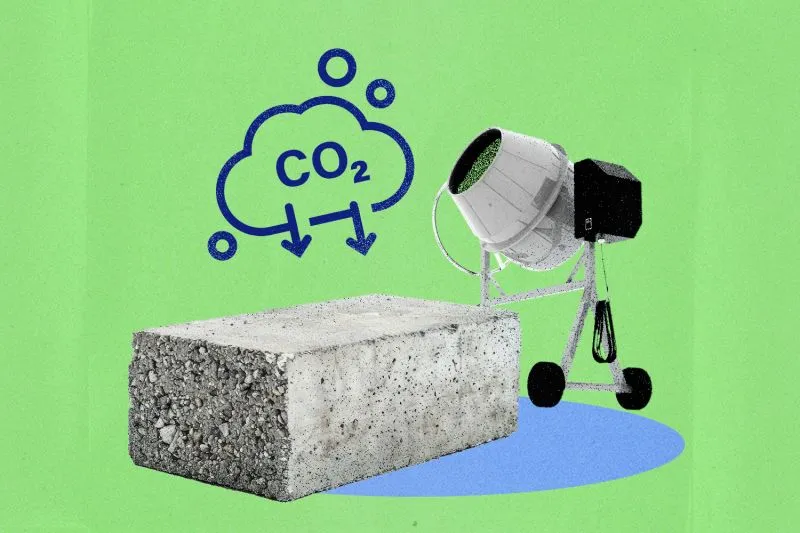Environnement et écologie
Recycling CO2 to transform our environment
Le post
Voir sur
We can turn our built environment into a global carbon sink, recycling the CO2 warming the planet into homes, skyscrapers, roadways and more, writes Robert Niven, CEO of CarbonCure Technologies, in a #Voices article this week. Read more: https://nt-z.ro/3yiy5W3

Le débunk
The overall statement is true: CarbonCure’s technology can store CO2.
The chemical principle is straightforward: CO2 reacts with calcium oxide to form calcium carbonate, which consolidates the concrete: https://lc.cx/jnSw9a
CarbonCure claims they reduce the CO2 footprint of concrete production by consuming more CO2 than conventional processes: https://lc.cx/BHJajW 1 cubic yard of their concrete (0.76 m³) stores 15 lbs of CO2 (6.8 kg): https://lc.cx/obKvs0 Given a concrete density of 2000 kg/m³ (https://lc.cx/MmZyKi), this amounts to a storage ratio of 0.4% (i.e., 100 kg of concrete stores 0.4 kg of CO2).
The reduction in CO2 footprint is nothing to write home about.
Contrary to the article mentioned in the post (https://lc.cx/AJXg6d), the world produces around 4 billion tons annually, not 35: https://lc.cx/EXZ0bX
However, about 35 billion tons of CO2 are emitted globally each year: https://lc.cx/CuLaoC
Therefore, if 100% of the world's concrete were produced using CarbonCure’s technology, we'd be storing a mere 0.05% of the total annual CO2 emissions!
While the CO2 reduction impact of this technology is tiny, it's still a "positive" contribution. So sure, let’s call it a useful tool to reduce the world's CO2 footprint.
Vous avez une question, une remarque ou une suggestion ? Contactez-nous en en indiquant le titre du débunk. Nous vous répondrons au plus vite !
Contactez-nous
